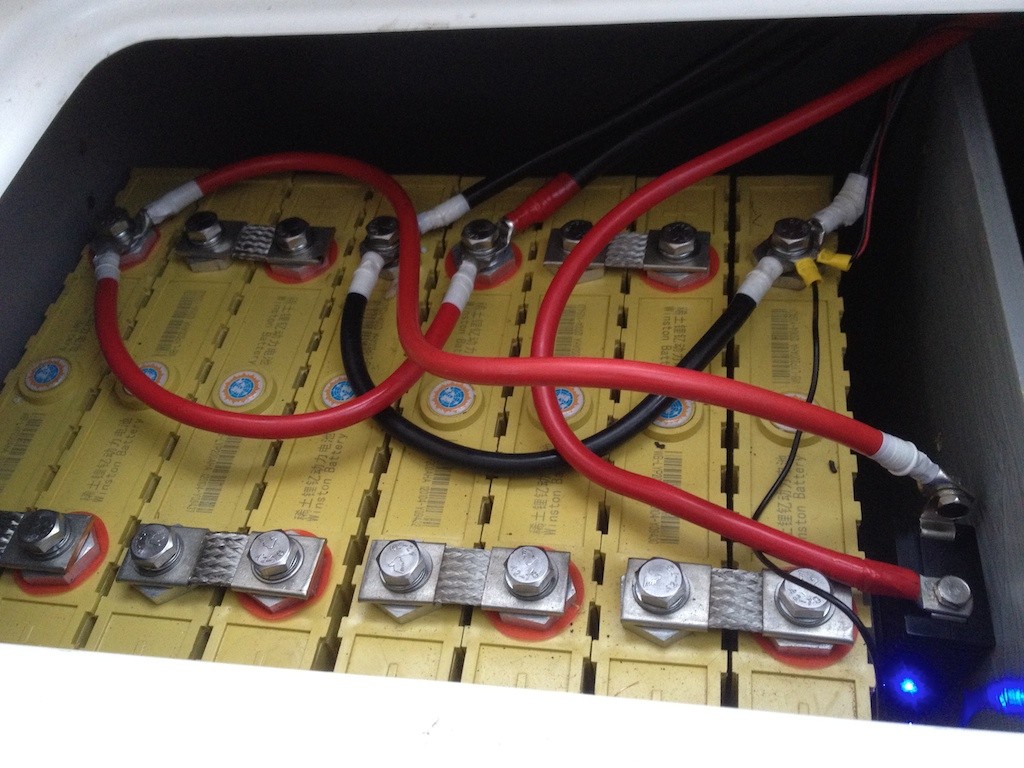Three of the most commonly sold bow-thruster brands in the recreational boat market are Sleipner (known as Side-Power), Vetus and Lewmar. Boat owners often ask, “What’s the difference?” In this article, we’ll take a look at the different aspects of bow thrusters made by each of these companies.
Overview of the Brands
Of the three brands, Vetus and Side-Power have been around the longest—since the 1980s—while Lewmar entered the thruster market in the early 2000s. Side-Power offers the most variety, with more individual thruster models available than Vetus or Lewmar, but all three companies offer DC electric thrusters, ignition-protected thrusters, hydraulic thrusters and retractable thrusters. Side-Power and Lewmar also offer AC-powered electric thrusters, and only Side-Power offers externally-mounted thrusters for use on boats where there is no room for a traditional tunnel-thruster, like between outboard engines or on the bow of a sailboat where the draft is shallow.
800x250.jpg)
All three companies now offer DC electric proportional speed thrusters, though Side-Power introduced the technology first, back in 2011, while Vetus & Lewmar each released their proportional thruster models in 2019. However for the purposes of this article, we have focused on standard on-off, DC-powered, bow thrusters and avoided nearly all reference to higher-end or specialty models.
Components & Appearance
The bow-thruster models sold by all three brands have a fair amount in common—a simple control panel at the helm, a solenoid, motor, gear leg (aka tail piece), and propeller in a tunnel installed in the bow of the boat below the waterline.
While similar in appearance, each brand’s thrusters vary in color—Lewmar’s thrusters are generally black and white, Vetus presents in yellow and gray with red propellers, and Side-Power thrusters are two tones of gray. (There are variations on these themes among Vetus and Side-Power proportional-speed and ignition-protected thrusters.)
Propellor Design

All three brands have innovated over the years and developed proprietary composite propellers for their standard DC-powered thrusters. Side-Power and Lewmar use 5-blade props of different design and construction; Vetus uses a 6-blade prop. Side-Power and Vetus have had other prop types on earlier models and have upgraded their props over the years.
All of Vetus’s models use a single propeller, which improved in power and efficiency when the company switched from 3-blade to 6-blade props. The other two brands have single- and twin-prop configurations. Typically, as thrusters get larger and more powerful, they go from single prop to twin prop models, and in Side-Power’s case, twin counter-rotation propellers on their larger models.
In terms of performance, the dual-prop and counter-rotating prop configurations provide more thrust than single props. There is also a difference for single-prop units when thrusting to port or starboard. When drawing turbulent water past the gear leg into the prop, there is less efficiency, such that your thrust in one direction will be a little less than the other. The difference is negligible on smaller boats but becomes noticeable on larger thrusters and larger boats.
One of the benefits of single-prop styles is that they usually cost less, and when pricing models of similar performance, the three brands bear similar prices. Depending on the sophistication of the model, prices will vary among the brands, but installation costs will be roughly equivalent. The other benefit to single-prop designs is that they can fit in steeper hulls with narrower tunnels, as the dual-prop designs require a longer tunnel for optimal performance.
Gear Leg Design
Thruster gear legs/tail pieces are typically made of bronze, although Lewmar and Side-Power have composite gear legs on their smallest units. Composite models don’t require zinc anodes to prevent corrosion.
Both Lewmar’s and Side-Power’s gear legs are sealed and filled with oil for lubrication; Vetus offers a mix of sealed and oil-fed units; the latter require changing the oil periodically. All brands use fiber-reinforced plastic (FRP) for their motor mounts on small thrusters and then transition to aluminum castings on larger units. Side-Power also uses nylon isolation bushings, creating galvanic separation from the motor mount to gear leg, preventing corrosion. Vetus offers isolation on some models, and Lewmar does not use isolation bushings.
Power Supply, Control Options & Safety Features

Utilizing DC power provided by dedicated batteries, all three brands sell models for 12- or 24- and 48-volt systems. All three brands also employ an auto-off main switch as a safeguard in case the battery power is left on. If an electrical short were to occur, a bronze gear leg could corrode in a hurry. For low-voltage situations, Side-Power thrusters come standard with an Integrated Power Controller (IPC) that will prevent the motor from getting stuck in a “run-on” situation as can happen when the contacts inside the solenoid weld together from low-voltage arcing.
Each brand offers a joystick or touchpad controller, with Side-Power also providing a patented boat-shape control option. There is variation in the mounts, although all require that a hole be cut in the dash. Lewmar and Side-Power have screws on the front for mounting convenience, and Side-Power’s are hidden under plastic tabs. Styling and colors varies by brand, and Vetus’s panels are a little larger than the other two. The warranties are similar for all three companies, with Lewmar and Vetus offering a three-year warranty and Side-Power offering two years.
Price Comparison
We interviewed and obtained price quotes from installers for similar-powered thrusters of each brand—Side-power SE60, Vetus BOW60, Lewmar 185TT3—on a 35-foot express/open style yacht with a 185mm-diameter tunnel (7.28”). These units and a tunnel of that diameter may not be right for your 35-footer, but the ballpark estimate for product and installation were similar at, or just below, $10,000.
In summary, we encourage you to learn as much as you can about thrusters before deciding which brands to pursue, starting with our article “How to Choose the Right Bow Thruster for Your Boat.” Also, work closely with your installer to understand their views of the differences in brands given the type of unit that suits your boat best.